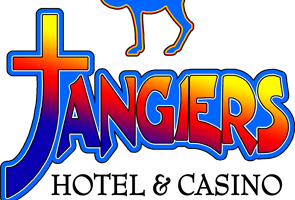The Tangiers Casino–A Sure Bet

The true story of success behind the largest skimming operation in Las Vegas history.
The Tangiers Casino in Las Vegas is an example of a company that was highly effective in aligning its business and operating models to drive record success. As with all casinos, the business model was simple: customers gamble against the house to win money. Overall, games had odds of winning of less than 50%, thereby statistically guaranteeing a profit for the casinos. Seeing this opportunity, the organized crime families of the Midwest made inroads to purchase the Tangiers casino.

In 1974, the Argent Corporation purchased the Tangiers casino using money provided through loans from the Teamsters Central States Pension Fund. Unbeknownst to regulators, this acquisition was the work of the Midwest mafia bosses, who told the Teamsters to loan the money in order to acquire the casino and skim its profits. Prior to this acquisition, the casino ran similar to many of the other casinos in Las Vegas. In an attempt to assert more control over the casino, the Midwest bosses hired renowned sports handicapper Sam “Ace” Rothstein to manage the casino operations.

In the casino, the cardinal rule is to keep them playing and to keep them coming back. The longer they play, the more they lose, and in the end, we get it all. -Sam Rothstein
Known for his meticulous attention to detail, Rothstein began sweeping changes to the casino that more closely aligned the operations to the business model. Rothstein took bold steps to eliminate cheating, streamline operations, create a pleasurable and remarkable gaming experience, and most importantly, keep people coming to the casino. Ace took several bold steps never before done in the casino industry to refocus operations and sustain the competitive advantage:
- Hired female card dealers. Prior to Rothstein’s tenure as manager, only men were allowed to deal. The Tangiers was the first casino in Las Vegas to allow women to be dealers, keeping men at the tables longer, resulting in longer play and higher profits.
- Opened a sports book in the Tangiers in 1976. A renowned handicapper, Ace was the first operator to introduce sports betting to casinos, a move that was soon copied by all casinos. He was able to leverage his unique talents to the benefit of the Tangiers operations, and reap the handsome rewards resulting from its success.
- Hired noted performers Siegfried and Roy from a rival casino to add to the Tangiers’ entertainment offerings.
- Rearranged the game layout on the casino floor to maximize visibility of winning slots.
- Replaced employees who were ill suited to the job, going against the norm of cronyism.
- Created a system whereby all employees were constantly watched and monitored, to ensure all operations ran as prescribed.
His efforts and meticulous attention to detail were so remarkable that it was reputed he made sure every blueberry muffin had a minimum of ten blueberries. This leadership and tight control of operations allowed the Tangiers to maintain a competitive advantage over its rival casinos, which lagged behind in both innovation and control.

Sam Rothstein was able to leverage his knowledge of gambling, especially sports betting, to streamline casino operations. Ace succeeded where other’s had not. He created a culture that focused on keeping the customer satisfied and coming back. His operational changes were made to achieve that goal, and grow the business. His changes aligned operations with the business model by focusing the efforts of all the disparate parts of the operation on the goal of maximizing profit. Every detail was paid attention to, and was integral to the change of culture.
There are three ways of doing things around here: the right way, the wrong way, and the way that I do it. You understand? –Sam Rothstein

Thanks to his efforts, the casino saw record profits. Over the five years of the skim, the bosses received $15 million each year. In 2015 dollars, that equates to $72 million per year. After the operation was shut down in 1979, former FBI agent William Roemer, head of the agency’s organized crime unit in Chicago, remarked, “The amount of skim had been so heavy that the profit and loss statement did not present a true picture of the gold mine that the [Tangiers] was.”
This project is based on the 1995 film Casino, directed by Martin Scorsese. It mixes in facts from the real story to those in the film itself. If you would like to read more, the full story on which the movie is based is entitled Casino: Love and Honor in Las Vegas by Nicholas Pileggi.
Sources:
Casino. Film, 1995.
The Great Stardust Skim. http://www.ccgtcc-ccn.com/StardustSkim.pdf
http://www.chasingthefrog.com/reelfaces/casino.php




Hi Austin,
Thank you for the great post. You do a great job of explaining how operations changes at the Tangiers made the business extremely profitable and changed Las Vegas casinos forever. Looking at casinos today, it seems as though every one of Rothstein’s innovations, from hiring female dealers to hosting flashy entertainment acts, have become standard in the industry.
Having not seen the film, can you go into more detail about what exactly was illegal? Whether the funding was sourced legally or not, The Tangiers described in the post appears to be a legitimate, sustainable business.
Adam
Such a fun topic! Casinos are definitely all about keeping the customers captive at the casino and ensuring an experience that makes customers want to come back. An operational enhancement that has been a recent focus for casinos is building out a data analytics department to manage revenues and to better market to customers. The key now is to use this data to attract and retain customers who have a high expected life-cycle value.